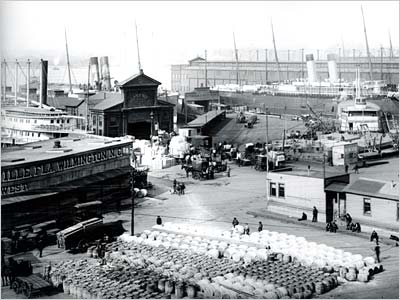By the time of the Civil War, New York's port was the busiest not only in the United States but, in all probability, in the world, because of the biggest cities in the world New York was one of the few that was actually on the ocean. The biggest European cities—Paris, London, Rome, Berlin—were essentially river cities.
For many years after the American Civil War, when there was no income tax, the entire cost of running the government of the United States was borne by the port of New York, where a tariff, or duty, was collected on goods imported to the United States from England, Germany, or wherever. That money was then remitted to Washington.
The port of New York remained the most important in the country through the First World War. By that time, steel-hull ships and steam-powered ships were being used. These were bigger and longer and drew a deeper draft. They gravitated away from the South Street side and the East River and toward the Hudson River, which was wider, and that's where the bigger piers were built. In the twentieth century, even at the beginning of it, the age of the sail, associated with South Street, was declining as the steamships came rolling into the Hudson River. Despite all that, though, New York's harbor remains the most important in the world.
 |
 |
 |
| New York harbor (c. 1910). |
 |
| City of New York Municipal Archives |
|